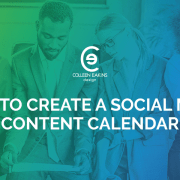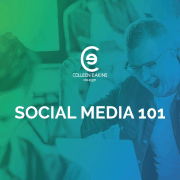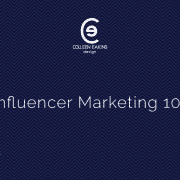What is it?
Influencer marketing is collaboration between a celebrity or an influential person (usually on social media) with a company to promote a service, product or campaign.
It used to be that celebrity endorsements (think of Michael Jordan with Nike) was the driving force that would influence an audience to buy products, but with this digital age, “influencers” can come from social media and blogs. These will be people with a large following with a niche audience.
Why Use Influencer Marketing?
This can be a powerful marketing tactic in your arsenal that provides the consumer with trust and value of your brand. A third party recommendation or ‘seal of approval’ can boost your company and offerings’ reputation.
The partner you work with will not only bring with them their own network of followers, but their follower’s network as well. You have automatically increased your social media presence and traffic to your site through this connection.
Even though there are many options to block out the marketing noise that people can hear through commercials with on-demand, streaming and settings to block certain items seen on your feed – the internet has become the avenue where everyone is corralled and influencer marketing provides an extreme opportunity to align with an influencer who will best support your brand’s vision and goals.
How Do I Choose an Influencer?
You must make sure that you assess your brand’s campaign goals and the influencer’s content before making any partnerships. Other items to consider are:
- Relevance – does this person share content that pertains to your business and/or products?
- Reach – what is the potential number of people that can be reached based upon the influencer’s following (remember to include all channels they are on)?
- Action vs Engagement – will this influencer only drive awareness or convert them in to purchases?
- Engagement in this instance is commenting, sharing or liking posts.
- Saturation – is this influencer already promoting too many products?
- Visibility – what channel(s) are the influencer on that will maximize visibility to total network?
You want the influencer to build trust and have their following value the opinions they present. Without this, there will be no conversion for your brand.
Working with the Influencer
This will solely be based upon your agreed upon terms with the influencer, but be prepared to release some creative control. They have built their entire following upon a specific passion, service or product. Collaborate with them on what they feel best will resonate with their following, but also adheres to your brand standards.
Legally, they must follow rules from the Federal Trade Commission, specifically under disclosure. This should be built in to your agreement.
- Video reviews must have both written and verbal disclosures stating partnership.
- Though each social media platform has their own rules, please use those as more supplemental to the FTC than the rules to abide by.
- #ad and #sponsored are useful hashtags to use for disclosure, but they must be highly visible.
Compensation will and should be part of your agreement as they are providing a service to your company to drive traffic and increase sales. All influencers will want different types of compensation pending the level of involvement and visibility of their following.
- Financially – pending the level of commitment and influencer’s visibility across platforms, this can be an option, but proceed with caution as the sincerity of the ‘paid recommendation’ may be diluted.
- @Mentions/Shout Outs – being able to share a post or blog that the influencer has written on your companies’ pages will drive more traffic to their site which will make them feel recognized and honored to continue to support your brand in the future..
- Discounts/Giveaways – offering the influencer a discount on the product or service can be a great incentive for future recommendations. Possibly offering them a trial package/time with a new product to use and put out the first review would be a great incentive for the influencer, informing their followers and building awareness to your company.
- Commission – this could be a great alternative to financially compensating someone for their efforts. Also, this can be easily accounted for with certain discount codes or tracked URLs provided to their followers to make the purchase.
How to Measure ROI on Influencer Marketing?
First, you must determine what the main goal is for partnering with an influencer – awareness, lead generation, social media presence lift, sales, etc.? Being as specific as possible when setting your goals will be valuable in reviewing results in the end to determine the ROI. Examples below:
- Drive an extra $X,XXX sales per week
- Add an extra XX email addresses to its database each week
- Add an extra XX subscribers each week
- Increase their followers by XXX per week
- Double their engagement on determined social media platform
We can apply the same items that are used to consider an influencer to measure the ROI (return on investment) that will optimize your success.
Sales: if you are looking to increase your sales of a service or product, an easy way to measure is to include a specific code or tracked URL to the influencer to include in their posts.
Lead Generation: was the content created inviting enough for the influencer to push out to allow for more subscribers or followers to further share the information?
Social Media: view the likes or subscribers to your page after an influencer campaign has ended. Make sure to record numbers before and after versus cost (compensation to the influencer plus any paid ads per social media platform).
Engagement: measuring the views, clicks, likes, shares and mentions will help analyze the success of the campaign versus cost (compensation to the influencer plus any paid ads per social media platform).
Reach: did the content that was crafted resonate and bring meaning with this niche group that the influencer is a part of?
Pending on the value that needs to be added to your brand, utilizing the influencer marketing tactic can be very beneficial and can come with a huge reward for minimal cost that the digital space leverages. Careful evaluation of the potential influencers and their network is a key component as you can reach a highly niche audience that is beneficial to your mass market product or service.
At Colleen Eakins Design, we can help strategize what design components will be needed in your campaign that the chosen influencer can utilize.
I received my Bachelors in Marketing and Certification in the Pastry Arts. I have managed a wide array of printed and digital marketing needs.







 ©2018, Colleen Eakins Design
©2018, Colleen Eakins Design